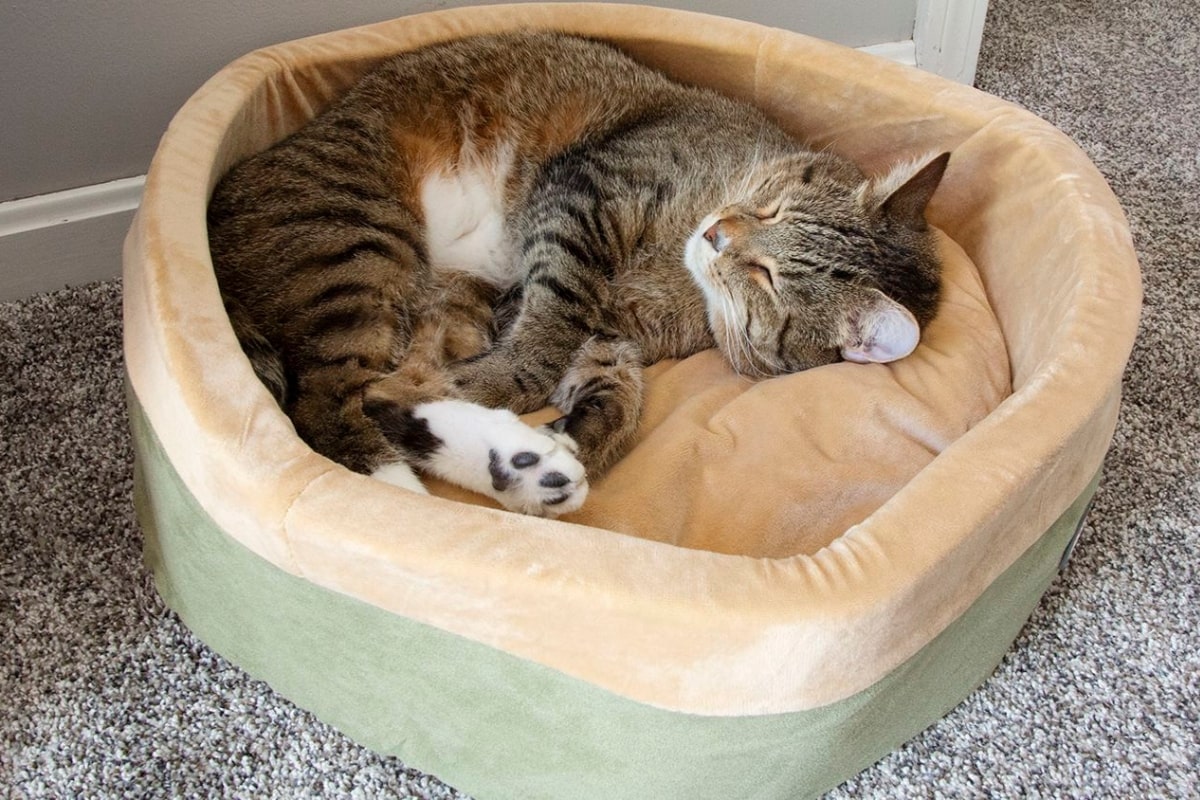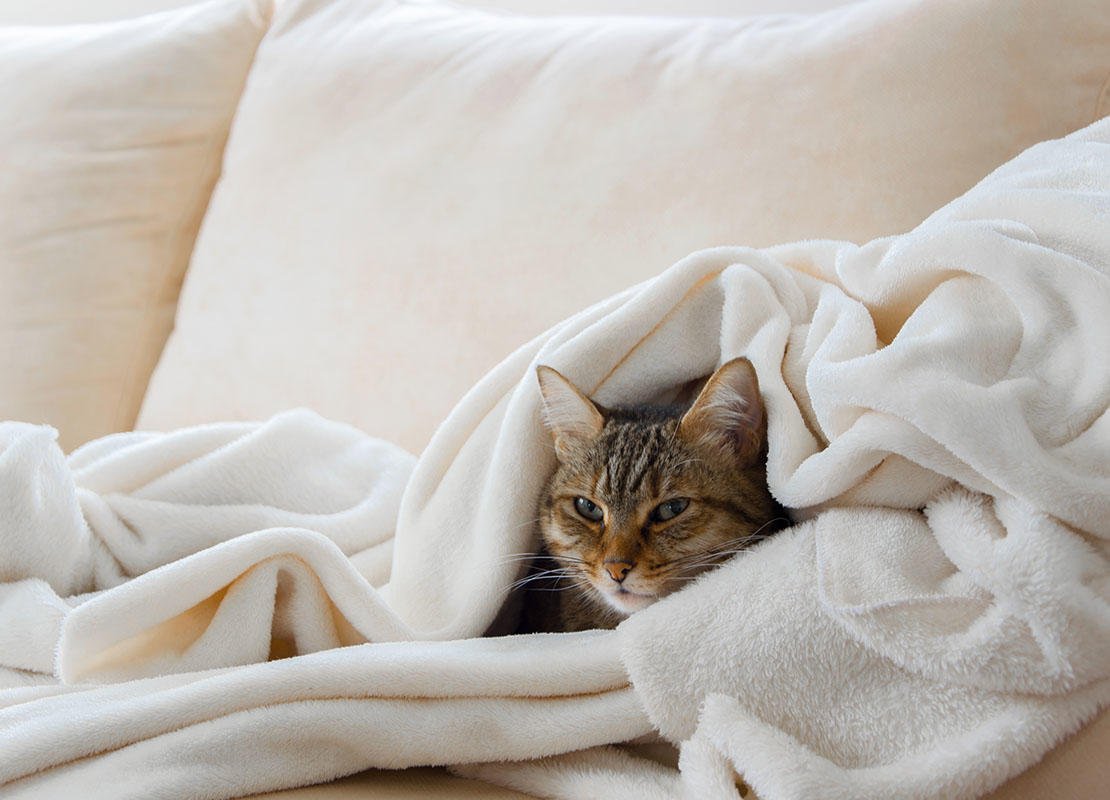Anyone who lives with a cat knows that they’re big heat-seekers. If there’s a warm spot to be found, your kitty will find it! Whether it’s a sun-puddle on the living room floor, a windowsill, or a warm pile of laundry straight from the dryer, cats are creatures of comfort, and the most comfortable cat is a warm cat.
So with the temperature dropping, check out these easy tips to make sure your cat enjoys a pleasant winter.
First things first… Do cats get cold?
Cats typically have warm coats and (hopefully) they stay inside. However, they can still get cold, especially if they’re a hairless breed or have very short fur. Your cat may get outside without warning on a chilly day or find themselves in a cold area of your house. They can also feel the cold if you turn the household heating down too low, or if you’re the sort of household who turns the heating off while you’re out of the house.
There’s no mistaking that there’s a Winter chill in the air, and cats can feel it too, whether they live primarily indoors or outdoors. Even if your cat loves being outside, when temperatures drop closer to 0°C, you need to bring your cat indoors or provide lots of warmth in a sheltered area outside to reduce the risk of hypothermia or frostbite.
During the colder months, keep your fur baby’s comfort in mind by preparing some ways to keep them warm before the chilly days start to breeze in.
Indoor vs. Outdoor Cats
If your fur baby spends most of it’s time indoors and isn’t overly accustomed to cold weather, then Winter time is even more of a reason to keep it that way. Once temperatures drop below 7°c, your cat should be securely indoors for their own safety. A good guideline to follow is that if your home feels too cold for you, your indoor cat probably feels the same. In which case, it’s probably a great time to turn up the heating or think about getting some indoor heaters.
If your cat spends most of it’s time outdoors, then it may be more accustomed to the colder conditions. Once the thermometer drops below 0°c however, you should think about either bringing your four-legged family member inside or setting it up with an insulated cat shelter.
Kittens and Senior Cats
Whether or not they’ve spent most of their time outdoors, kittens and older cats are more vulnerable to extreme weather temperatures due to their growing/slowed-down immune system. Just like indoor cats, you should not leave older cats or young kittens outside when the weather drops below 7°c, especially at night.
Helpful Winter Preparations

Set up a warm bed
Your kitty will no doubt appreciate extra blankets to cuddle up with on their bed. You can also consider purchasing a Cat Cave bed for during the winter months so that your cat can curl up and stay well insulated when the temperature drops.
Provide shelter for your outdoor cat
If your cat prefers to roam outdoors, build or purchase a small outdoor cat house and add some blankets inside to shelter your fur baby from low temperatures and chilly winds.
Avoid the urge to move their Litter Box
Yes, litter boxes can smell horrendous. Add heat to the mix, and your house can become incredibly stinky in no time! Though no matter how tempted you are to move your kitty’s litter box – to the garage or basement where no human nose can encounter it – those locations tend to cool off faster than other areas of your home. Keeping the litter tray clean and using deodorizers will significantly help with the smell and allow your cat to toilet in a warm area of the house.
Keep them active & give plenty of kitty cuddles
Just like us, cats feel warmer when they exercise! Coming into the colder months, it’s a great time to give your fur baby lots of toys that will keep them busy and active throughout the day. Taking some time out of your day/night to have a play with your cat and give them loads of cuddles will also boost their metabolism and keep them warm during the cool hours of the day.
Increase their food intake
You might think: more food will make your cat overweight. However, cats in the winter months benefit from a higher food intake as staying warm requires more calories than keeping cool. Try adding a few healthy, high-calorie treats to their diet to enhance their increased need for calories.
Check your car’s bonnet
A newly-parked car is an obvious though dangerous source of heat for many outdoor cats. Before taking a drive, check that your cat hasn’t curled up for a snooze near the warm engine.
Signs of Hypothermia
Hypothermia is when the body temperature falls below the normal rate due to exposure to cold weather. If a cat is accidentally left outdoors in very cold weather, it can develop hypothermia.
Signs of hypothermia in cats can include:
- Weakness
- Inactivity
- Shivering
As hypothermia worsens, cats can become unresponsive, and their breathing and heart rate can slow down to dangerous levels. Without treatment, this can unfortunately lead to death.
Immediate Care
- Move the cat to a warm environment and, if wet, dry up and wrap them in warm towels or blankets
- Use hot water bottles to help warm your cat, but make sure it’s not too hot. If you can’t hold it in your hands, it is too hot
- Do not use an electric heating pad, as it could burn your cat, even on a low setting
- If possible, check your cat’s rectal temperature
- Take your cat to your veterinarian as soon as possible
Ultimately, we always recommend keeping your cat in the safe and warm confines of the indoors. We all want our cats to live long, healthy and happy lives, and whilst many cat-owners believe it may be ‘cruel’ to keep their cat locked indoors all day and night, often it is the outside world that exposes our beloved family pets to what puts their lives in the most danger. Read our 5 reasons to keep your cat inside here.

